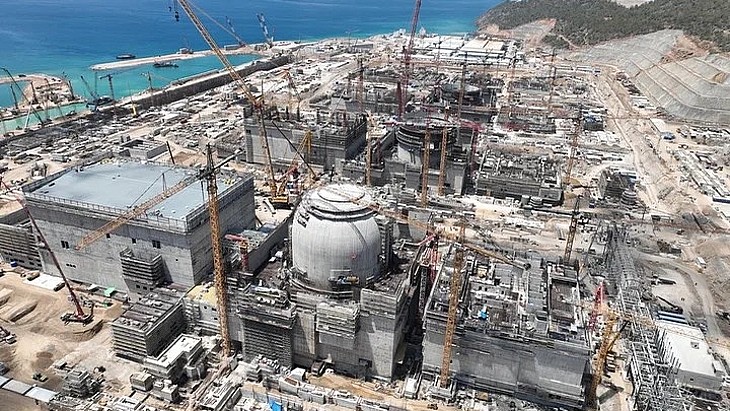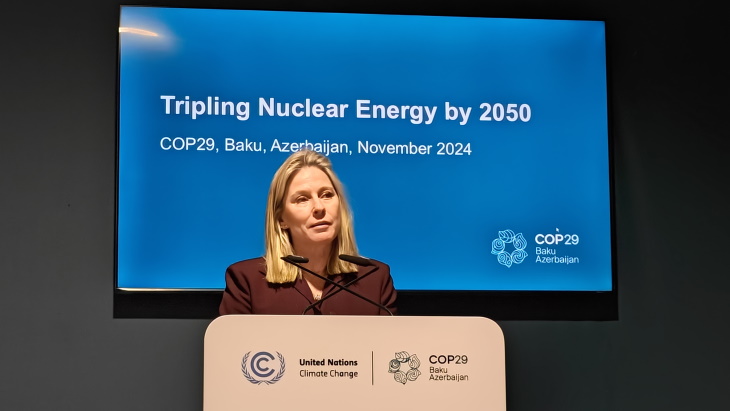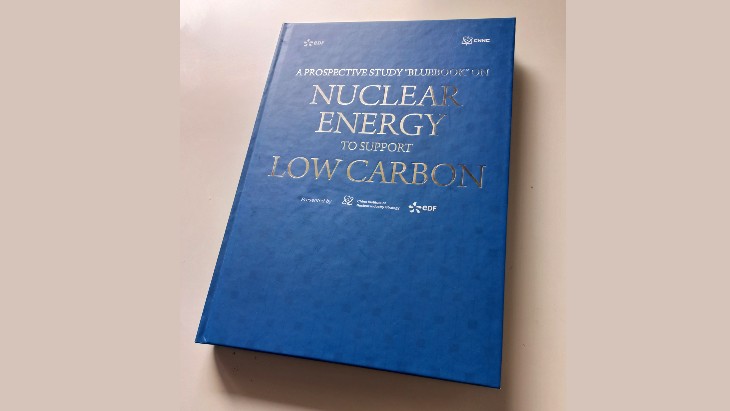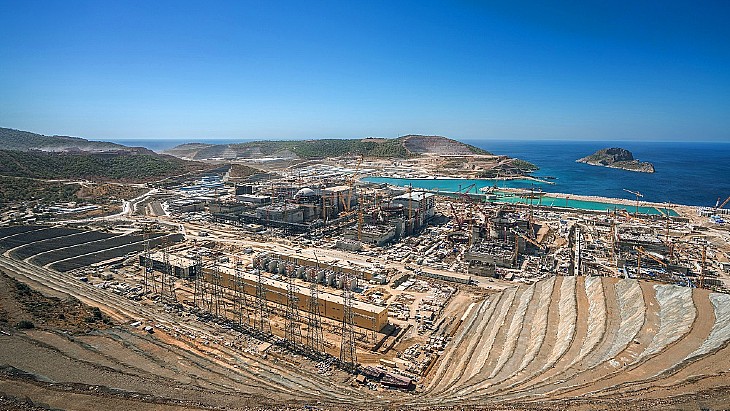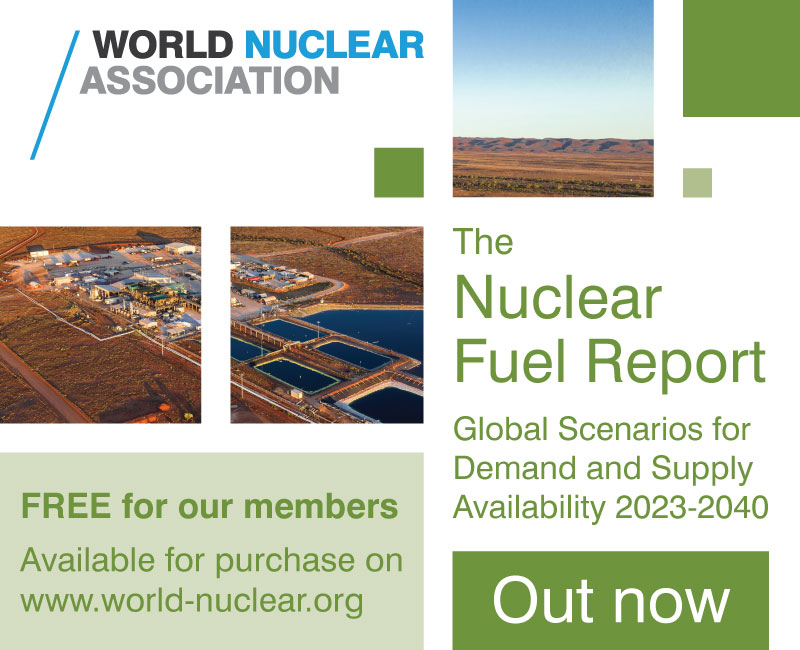Clean energy ecosystem proposed for USA
.jpg)
Advancing the Landscape of Clean Energy Innovation was commissioned by the Breakthrough Institute and prepared by consulting group IHS Markit and the non-profit Energy Futures Initiative, under the leadership of former US Secretary of Energy and Energy Futures Initiative founder Ernest Moniz and IHS Markit vice chairman Daniel Yergin. The report evaluates ways to maintain US leadership in clean energy innovation by aligning "policies, players and programmes" that will drive technologies that can keep the nation globally competitive.
The increasing focus on clean energy technology solutions and the potential for disruptive changes in energy systems points to the need for an objective review of the current clean energy innovation ecosystem, including identifying its strengths and weaknesses and how it can be improved or accelerated, the study notes. The changing US energy supply profile, advances in technologies such as digitalisation and big data analytics, expansion of electrification in transport and industry, the emergence of "smart cities", and broad social and economic forces pushing to decarbonise energy systems in response to the risks posed by global warming and associated climate change all present significant opportunities for clean energy innovation, it says.
The report uses a four-step methodology - focusing on technical merit, potential market viability, compatibility with other elements of the energy system, and consumer value - to identify breakthrough technologies to address national and global challenges and help meet near, mid- and long-term clean energy needs and goals. Applying these considerations to a list of 23 potential technology candidates, it then draws up a key technology shortlist of: storage and battery technologies; advanced nuclear reactors; technology applications for "difficult to decarbonise" sectors such as industry and buildings; electric grid modernisation and smart cities; and deep decarbonisation/large-scale carbon management.
"Nuclear energy can provide large-scale zero-emissions power generation, as well as clean energy support for industrial value chains," the report notes. Providing for a nuclear energy option - both nationally and globally - to provide clean, dispatchable baseload and scalable power in a complex and dynamic power grid environment is a "critical goal" to help support fundamental needs for stability and resiliency as the global energy system evolves toward a cleaner and more sustainable mix of generation sources, it says.
The current nuclear fleet's reliability and very high capacity factors are major assets but safety, cost, non-proliferation, environmental, and security concerns must also be satisfied going forward, it notes.
Advanced reactors have key attributes of improved economics, enhanced safety systems, reduced used fuel disposal requirements and proliferation risk, as well as the capability for longer refuelling cycles than the current fleet, the report finds. In addition, several advanced reactor technology options - small modular reactors - can be implemented at smaller scale and can be used to produce process heat. "The combination of these two characteristics makes these reactors potentially suitable for many industrial applications that are otherwise difficult to decarbonise," the report finds. Process heat for industrial processes is currently provided almost exclusively by the burning of fossil fuels and is the source of about 20% of total US energy-related CO2 emissions.
"We are now undergoing rapid change in the global competitive environment, challenging America's preeminent position but also offering immense opportunity for shaping the inevitable low-carbon global energy future," Moniz said. "These technologies provide an actionable framework for prioritising public resources and inspiring private innovation."
Green New Deal
A resolution introduced in both the US House and Senate yesterday proposes a framework for meeting 100% of the country's power demand through clean, renewable and zero-emissions energy resources.
The resolution, known as the Green New Deal, was introduced in the House by New York Representative Alexandria Ocasio-Cortez and in the Senate by Senator Edward Markey of Massachusetts. It says that, because the USA has historically been responsible for a "disproportionate amount" of greenhouse gas emissions and has a high technological capacity, the country must take a leading role in reducing emissions through economic transformation.
The resolution sets out goals and projects for a ten-year national mobilisation which include among other things: building US resiliency against climate change-related disasters; meeting 100% of national power demand through clean, renewable and zero-emission energy sources; maximising energy efficiency; spurring growth in "clean" manufacturing and removing pollution and greenhouse gas emissions from manufacturing and industry; overhauling transport systems; and making the USA the "international leader" on climate action.
It does not define what is meant by "clean, renewable and zero-emission energy sources," but says this goal should be met by "dramatically expanding and upgrading renewable power sources; and … by deploying new capacity".
Writing in Forbes, Michael Shellenberger - head of the Environmental Progress environmental research and policy organisation - noted that a written statement distributed by the office of Ocasio-Cortez stated that the plan would be to "transition off" nuclear. If attempted nationally, said Shellenberger, this would lead to increased emissions. "[T]he only green new deals that have ever worked were done with nuclear, not renewables," he said.
Maria Korsnick, president and CEO of the Nuclear Energy Institute (NEI) responded to the resolution by commending the effort to promote the adoption of clean and zero-emission sources of electricity to address climate change. "Nuclear energy operates 24/7, generates 20% of US electricity and more than 50% of our carbon-free generation, more than all other sources of zero-carbon electricity combined. Any approach to eliminating greenhouse gas emissions requires all clean energy technologies, including nuclear, to work together to address that urgent problem," she said.
"There is a growing consensus among climate advocates, including the UN Intergovernmental Panel on Climate Change, The Nature Conservancy, and even The Union of Concerned Scientists, that any climate solution must include nuclear energy," she added. "Former Energy Secretary Ernest Moniz said this week that the notion of achieving a grid composed of 100% renewables by 2050 is 'not realistic'."


